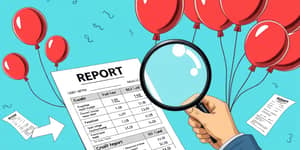
Student loan debt in America has reached record-breaking student loan debt levels, totaling nearly $1.77 trillion. Yet, for millions of borrowers, this burden doesn’t have to mean putting your entire life on hold. Whether you’re dreaming of buying a home, starting a family, or traveling the world, a thoughtful repayment strategy can keep you moving forward.
With 42.7 million federal borrowers and average balances exceeding $38,000, it’s easy to feel overwhelmed. But by combining practical planning with the right resources, you can manage monthly payments for your future without sacrificing your immediate goals.
The total student loan debt in the U.S. has climbed to approximately $1.77 trillion, with federal loans accounting for roughly $1.64 trillion of that total. Around one in six adult Americans is carrying federal student loan debt, and many are juggling this obligation alongside mortgages, family responsibilities, and career changes.
Since the end of the pandemic pause in late 2023, delinquency rates have surged from 0.8% to 8% in Q1 2025. This sharp rise reflects not only the end of relief measures but also the resumption of interest accrual. Borrowers over age 35 now represent more than half of all federal borrowers, and those aged 50–61 carry the highest average debt—$46,790.
Disparities persist: Black borrowers and attendees of for-profit institutions often face heavier burdens. Understanding these numbers isn’t just about statistics—it’s about recognizing the widespread impact on individuals, families, and communities.
There is no one-size-fits-all solution. Your choice depends on your balance, income, career path, and long-term goals. Here are three proven approaches:
Income-Driven Repayment (IDR) plans cap monthly payments at a percentage of your discretionary income. The SAVE plan would lower payments to as little as 5% of income for eligible borrowers, allowing those earning below $15/hour to pay $0; however, it is currently on hold pending legal review. The REPAYE plan continues to set payments at 10% of income. After 20–25 years, any remaining balance may be forgiven.
Public Service Loan Forgiveness (PSLF) offers total forgiveness after 120 qualifying payments while working full-time for a government or nonprofit employer. Many public servants—teachers, nurses, and social workers—rely on this program, but strict documentation and annual certification are critical to ensure payments qualify.
By understanding the eligibility criteria and maintaining meticulous records, borrowers can protect their pathway to full forgiveness and avoid surprises at repayment’s end.
Balancing debt repayment with other financial goals requires discipline and creativity. Use these practical tips to maintain momentum without sacrificing your dreams:
Keeping an eye on both numbers and emotional well-being is essential. Tracking your progress not only fuels motivation but also ensures you stay on course for forgiveness programs.
Below is a quick-reference table of key statistics that every borrower should know. Reviewing these figures periodically helps you measure your progress and adjust strategies as needed.
Carrying student loan debt can feel like a constant tug-of-war between today’s needs and tomorrow’s aspirations. Yet with the right strategy, meticulous record-keeping, and a commitment to both payments and personal goals, you can embrace a balanced financial journey and continue living the life you’ve envisioned.
Begin by choosing the repayment approach that aligns with your income, career, and long-term dreams. Automate your payments, celebrate each milestone, and resist the urge to pause your life’s most meaningful adventures. With careful planning and unwavering determination, you’ll transform debt from an obstacle into a stepping stone toward a brighter, more fulfilling future.
References













